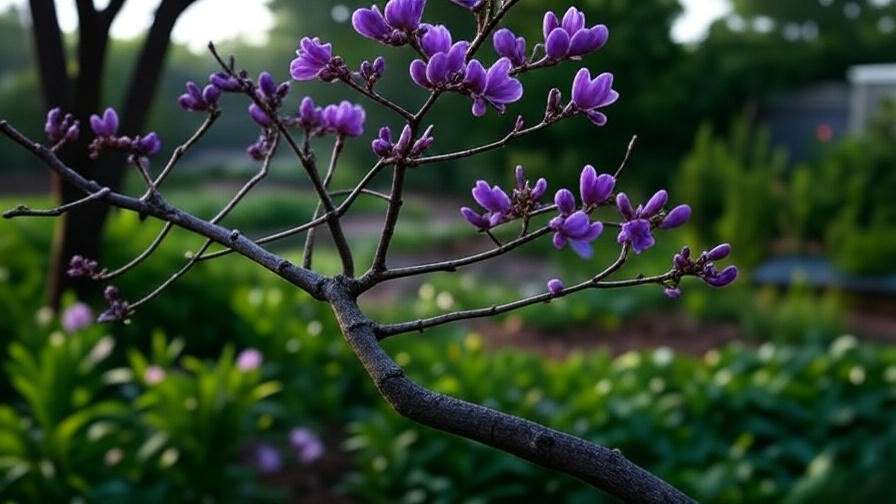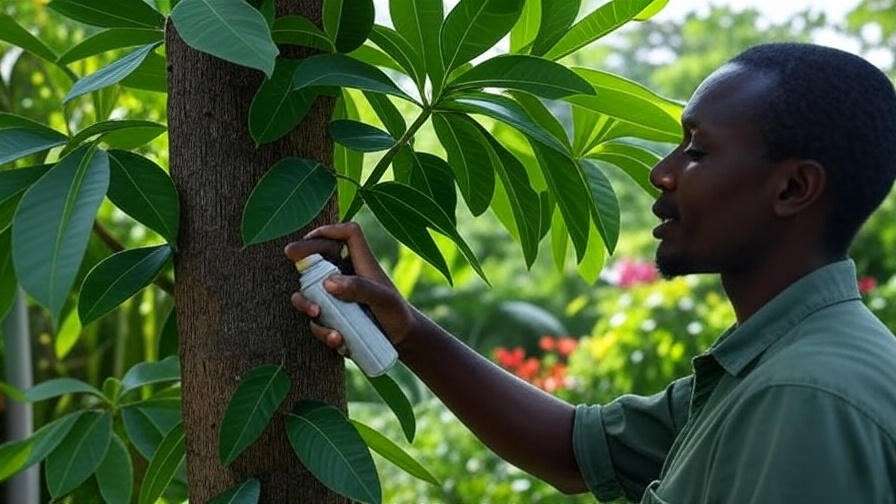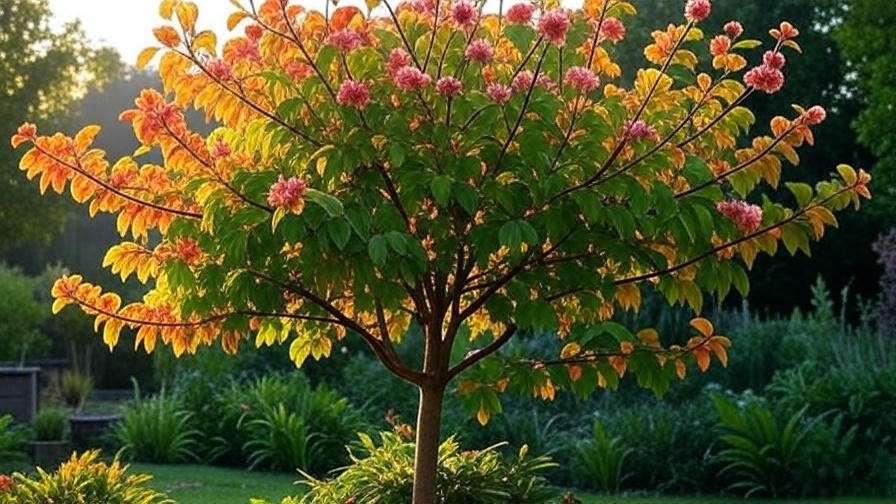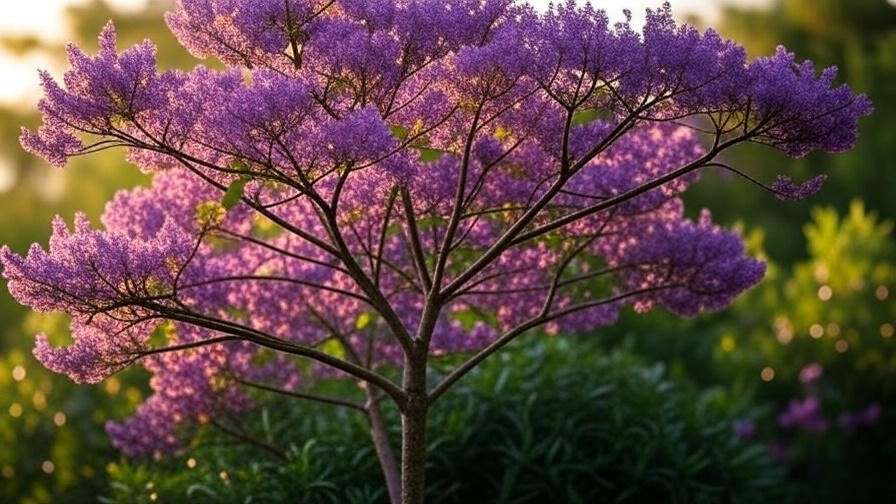Imagine stepping into your garden and being greeted by a cascade of vibrant purple, yellow, or pink blooms swaying gently in the breeze—a sight that stops neighbors in their tracks. This is the magic of the ipe tree, a tropical marvel that transforms any landscape into a showstopper. Whether you’re a seasoned gardener or a beginner eager to nurture a stunning centerpiece, this comprehensive guide will equip you with expert tips to grow and care for your ipe tree. From planting to pruning, we’ll cover everything you need to ensure your ipe tree thrives, delivering breathtaking blooms and lush foliage year after year. As a horticulturist with over a decade of experience in tropical tree care, I’ve seen firsthand how proper techniques can make your ipe tree the envy of the neighborhood. Let’s dive in and unlock the secrets to vibrant growth! 🌿
1. Understanding the Ipe Tree: A Tropical Marvel 🌿
1.1 What Is an Ipe Tree? 🧐
The ipe tree, scientifically known as Tabebuia spp., is a stunning flowering tree native to Central and South America. Often called the trumpet tree or pau d’arco, it’s celebrated for its vibrant blooms and durable hardwood. These trees typically grow 20-40 feet tall, with a canopy spread of 15-25 feet, making them ideal for gardens, parks, or streetscapes. Their trumpet-shaped flowers bloom in clusters, offering shades of purple, yellow, pink, or white, depending on the species. Beyond aesthetics, ipe trees hold cultural significance in South America, where their bark is used in traditional medicine for its purported health benefits. Fun fact: The name “ipe” comes from the Tupi language, meaning “hard wood,” a nod to its sturdy timber. 🌼
1.2 Why Choose an Ipe Tree for Your Garden? 🌺
Ipe trees are a top choice for gardeners seeking beauty and functionality. Their vibrant blooms create a focal point, while their dense canopy provides ample shade. Unlike some ornamental trees, ipe trees are relatively low-maintenance, thriving in warm climates (USDA zones 9-11). They’re perfect for tropical and subtropical regions, from Florida to Southern California. Compared to jacarandas or cherry blossoms, ipe trees offer longer blooming periods and greater drought tolerance, making them a practical yet stunning addition. Plus, their hardwood is so durable it’s used in decking and furniture, adding long-term value to your landscape. 🌞
2. Planting Your Ipe Tree: Getting Started Right 🌱
2.1 Choosing the Perfect Location 📍
To ensure your ipe tree flourishes, location is key. These trees crave full sun—at least 6 hours of direct sunlight daily—to produce their signature blooms. Choose a spot with well-draining soil, as ipe trees dislike “wet feet.” A slightly acidic to neutral soil pH (5.5-7.5) is ideal; test your soil with a kit from your local nursery for accuracy. Ensure the site has enough space for the tree’s mature size, avoiding areas near power lines or buildings. Pro tip: Check for underground utilities before digging to prevent costly mishaps. 🛠️
2.2 Selecting a Healthy Ipe Tree 🌳
A healthy start begins with a quality tree. At the nursery, look for a specimen with a strong, straight stem, vibrant green leaves, and no signs of wilting or pests. Avoid trees with yellowing foliage or damaged roots. Container-grown trees are easier for beginners, offering a controlled root system, while bare-root trees may be cheaper but require extra care during planting. Ask nursery staff about the tree’s history—reputable suppliers often provide ipe trees grafted for better blooming. 🌿
2.3 Step-by-Step Planting Guide 🌱
Planting an ipe tree is straightforward with the right approach. The best time is early spring or fall, when temperatures are mild in warm climates. Follow these steps:
- Dig the hole: Make it twice as wide and as deep as the root ball.
- Amend the soil: Mix in organic compost to boost nutrients and improve drainage.
- Position the tree: Place it so the root collar is level with the ground.
- Backfill and water: Fill the hole, tamp down gently, and water thoroughly.
- Mulch: Add a 2-3 inch layer of organic mulch (e.g., wood chips) around the base, keeping it away from the trunk to prevent rot.
Expert tip: Stake young trees for the first year to support growth in windy areas. 🌦️

3. Essential Ipe Tree Care Tips 💧
3.1 Watering Needs 🚿
Proper watering is critical, especially for young ipe trees. Water 1-2 times weekly for the first year to establish roots, using about 10-15 gallons per session, depending on soil drainage. Mature trees are drought-tolerant but benefit from deep watering every 2-3 weeks during prolonged dry spells. Overwatering is a common mistake—soggy soil can lead to root rot. Check soil moisture by digging a few inches down; if it’s dry, water. Pro tip: Use a soaker hose for even distribution and to avoid wetting the foliage. 💦
3.2 Fertilizing for Growth and Blooms 🌸
Fertilizing fuels your ipe tree’s growth and vibrant blooms. Apply a balanced, slow-release fertilizer (e.g., 10-10-10) in early spring and mid-summer. Organic options like composted manure or fish emulsion work well for eco-conscious gardeners. Avoid high-nitrogen fertilizers, which promote leafy growth at the expense of flowers. For precision, test your soil annually to tailor nutrient applications. Expert insight: A phosphorus-rich fertilizer (higher middle number, e.g., 5-10-5) can boost blooming. 🌼
3.3 Pruning and Maintenance ✂️
Pruning keeps your ipe tree healthy and shapely. The best time is late winter or early spring, before the blooming season. Use clean, sharp shears to remove dead or crossing branches, improve airflow, and shape the canopy. Avoid heavy pruning, as it can stress the tree and reduce blooms. For young trees, trim to encourage a strong central leader. Safety tip: Sterilize tools with rubbing alcohol to prevent disease spread. Regular maintenance includes clearing fallen leaves and flowers to keep the area tidy. 🌿

4. Protecting Your Ipe Tree: Pests and Diseases 🐞
4.1 Common Pests to Watch For 🕷️
Ipe trees are resilient but not immune to pests. Aphids, scale insects, and spider mites are common culprits. Aphids suck sap from leaves, causing curling, while scale appears as small, waxy bumps on stems. Spider mites leave fine webbing and stippled leaves. Prevention: Inspect your tree monthly, especially under leaves, and spray with neem oil as a natural deterrent. Treatment: For infestations, use insecticidal soap for aphids and mites or horticultural oil for scale. Always follow label instructions to avoid harming beneficial insects like bees. 🐝

4.2 Disease Management 🩺
Fungal diseases like leaf spot and powdery mildew can affect ipe trees in humid climates. Leaf spot causes dark spots on leaves, while powdery mildew appears as white, powdery patches. Prevention: Ensure good air circulation by spacing plants properly and avoiding overhead watering. Treatment: Apply a fungicide labeled for ornamental trees if symptoms persist. In my experience, a Florida gardener successfully managed leaf spot by improving drainage and applying copper-based fungicide. Regular monitoring and early intervention are key to keeping your tree healthy. 🌳
5. Maximizing Ipe Tree Blooms: Tips for a Stunning Display 🌺
5.1 Encouraging Vibrant Flowers 🎉
The ipe tree’s breathtaking blooms are its hallmark, and with the right care, you can ensure a spectacular show. Sunlight is non-negotiable—six or more hours of direct sun daily fuels flower production. Adequate nutrients, particularly phosphorus, support vibrant blooms, so stick to a balanced fertilizer as mentioned earlier. Pruning plays a role too; light trimming in late winter encourages new growth where flowers form. Pro tip: Deadhead spent blooms to extend the flowering season, as this redirects energy to new buds. Depending on the species, expect blooms in spring or early summer, with some varieties offering a second flush in favorable conditions. Patience is key—young trees may take 2-3 years to bloom profusely. 🌸
5.2 Companion Planting Ideas 🌿
Ipe trees shine as garden centerpieces, but companion plants can elevate their beauty. Pair them with low-growing shrubs like lavender or salvia, which complement the ipe’s vibrant colors without competing for space. Groundcovers such as creeping thyme or lantana add texture and attract pollinators. For a tropical vibe, consider planting bromeliads or bird-of-paradise nearby. Design inspiration: Create a layered look with ipe as the tall focal point, mid-height shrubs, and colorful perennials at the base. Ensure companions share similar sunlight and water needs to simplify care. This approach not only enhances aesthetics but also supports a thriving ecosystem. 🦋

6. Troubleshooting Common Ipe Tree Problems 🤔
6.1 Why Isn’t My Ipe Tree Blooming? 😕
Few things are more frustrating than an ipe tree that won’t bloom. Common culprits include insufficient sunlight, nutrient imbalances, or improper pruning. If your tree gets less than 6 hours of sun, consider relocating it (if potted) or thinning nearby plants to reduce shade. Nutrient deficiencies, especially low phosphorus, can stunt flowering—test your soil and adjust fertilization. Over-pruning or pruning at the wrong time (e.g., late summer) can remove flower buds. Troubleshooting checklist:
- Confirm full sun exposure.
- Test soil for nutrient levels.
- Review pruning schedule and techniques.
If issues persist, consult a local arborist for tailored advice. 🌞
6.2 Leaf Drop and Other Concerns 🍂
Leaf drop can signal stress from drought, overwatering, or pests. During dry spells, ensure deep watering every 2-3 weeks for mature trees. Conversely, check for soggy soil, which indicates overwatering—let the top few inches dry out before watering again. Pests like aphids or spider mites can also cause leaf drop; inspect and treat as outlined in section 4.1. Other concerns, like yellowing leaves, often stem from nutrient deficiencies (e.g., nitrogen or iron). Apply a chelated iron supplement for yellowing, and retest soil to confirm nutrient needs. Actionable steps: Diagnose by checking water, pests, and soil, then adjust care accordingly. 🌳
7. Seasonal Care Calendar for Ipe Trees 📅
To keep your ipe tree thriving year-round, follow this seasonal care calendar:
- Spring: Apply slow-release fertilizer, prune lightly, and water young trees weekly. Check for pests as new growth emerges.
- Summer: Monitor blooms and deadhead as needed. Water mature trees during prolonged dry spells. Inspect for fungal diseases in humid areas.
- Fall: Plant new trees in mild climates. Reduce watering as temperatures cool, and add mulch to insulate roots.
- Winter: Prune in late winter to shape the tree. Limit watering unless unusually dry. Check for storm damage.
Visual aid: In the final article, include a downloadable PDF calendar with monthly tasks for easy reference. Expert tip: Adjust the schedule based on your local climate—coastal areas may need more fungal prevention, while inland regions focus on drought tolerance. 🌦️

8. Environmental and Practical Benefits of Ipe Trees 🌍
Ipe trees are more than just eye candy—they’re eco-warriors and practical assets. Their flowers attract pollinators like bees, butterflies, and hummingbirds, boosting local biodiversity. The dense canopy offers shade, reducing cooling costs for nearby homes. Ipe wood, known for its durability, is harvested sustainably in some regions for decking or furniture, adding long-term value. Their drought tolerance makes them a low-water choice for eco-friendly landscaping, especially in arid climates. Sustainability angle: By choosing ipe trees, you’re supporting water conservation and wildlife habitats, making your garden a haven for both nature and people. 🌿
9. FAQs About Ipe Tree Care ❓
- How fast do ipe trees grow? Ipe trees grow 1-2 feet per year under ideal conditions, reaching maturity in 10-15 years.
- Can ipe trees grow in pots? Dwarf varieties can thrive in large containers (15+ gallons) with excellent drainage and regular care, but standard varieties are best suited for in-ground planting.
- Are ipe trees toxic to pets? Ipe trees are non-toxic to dogs and cats, though fallen flowers may attract curious pets—clean up regularly to avoid ingestion.
- How long do ipe trees live? With proper care, ipe trees can live 50+ years, becoming legacy trees in your landscape.
- What if my ipe tree’s leaves turn yellow? Yellowing often indicates overwatering or nutrient deficiencies. Check soil moisture and apply a balanced fertilizer or iron supplement as needed.
10. Conclusion: Your Journey to a Thriving Ipe Tree 🌟
Growing a vibrant ipe tree is a rewarding journey that transforms your garden into a tropical paradise. By choosing the right location, providing consistent care, and addressing pests or diseases promptly, you’ll enjoy stunning blooms and lush foliage for decades. Start today with one simple step: test your soil or inspect your tree’s sunlight exposure. With the tips in this guide, you’re equipped to nurture a healthy, eye-catching ipe tree that will be the talk of the neighborhood. Call-to-action: Share your ipe tree photos or questions in the comments below, and explore our other guides on tropical plant care for more inspiration! 🌺













